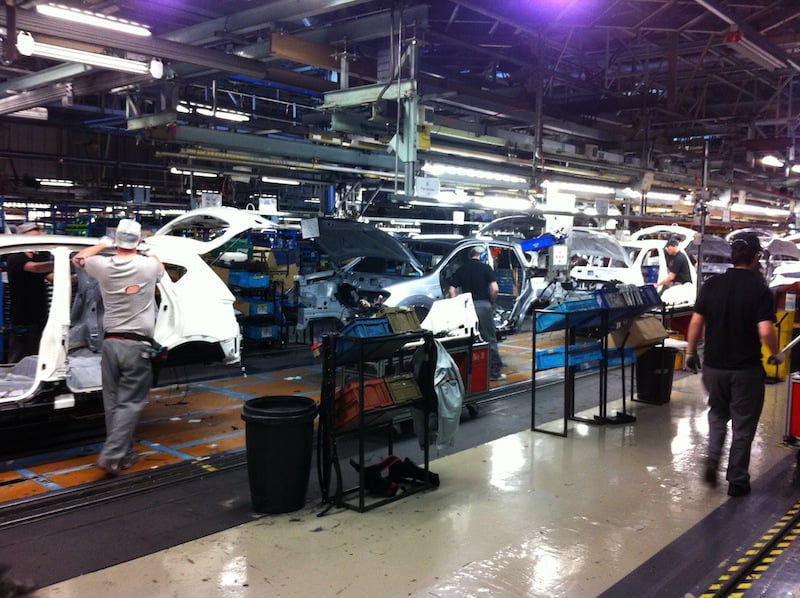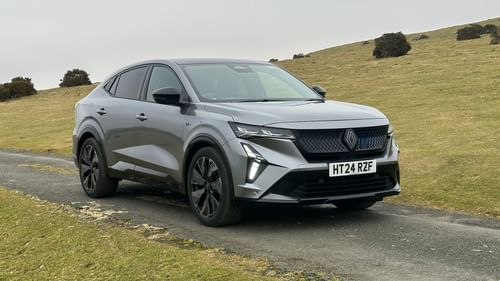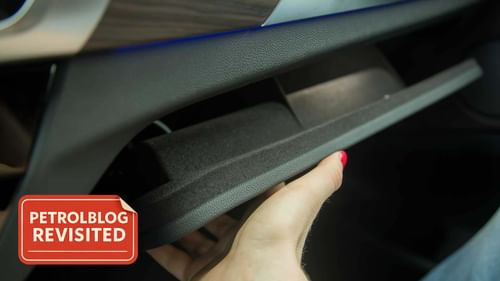
As a child who grew up watching children's television in the 1980s, I'm bound to say they don't make them like they used to. Well actually that's probably a fact as the modern stuff looks rubbish to me, Octonauts excluded.
One of my favourite features on children's TV was when they visited a factory to see where something was made. One minute, Humpty Dumpty would be wandering around a cheese factory, the next minute Bungle from Rainbow would be taking a look at someone making chocolate. They were good features as they gave me a glimpse into something I wouldn't otherwise have a chance of seeing.
But as far as I'm aware, they never went to a car factory. This may have been down to the fact that most of the time the workers were striking or simply because the factories weren't shining lights of brilliance. It's a shame. Maybe I should have written a letter to Jimmy Savile to see if he could have fixed it for me? Actually, maybe the car industry should have written to Sir Jimmy. But that's another story.
So when, some 25 years later, I was invited by Nissan to take a look at their Sunderland plant, I really couldn't refuse. It's kind of ironic really, as the original factory opened in 1986, about the time I would have been watching John Craven's Newsround.
 The tour of the factory was the last part of my day in Sunderland and it really was a case of saving the best until last. When you consider that I spent part of the morning driving a Juke-R and GT-R, this is really saying something. Or maybe I'm just strange. Either way, it was a real eye opener.
The tour of the factory was the last part of my day in Sunderland and it really was a case of saving the best until last. When you consider that I spent part of the morning driving a Juke-R and GT-R, this is really saying something. Or maybe I'm just strange. Either way, it was a real eye opener.
A great deal has changed in the 26 years that have passed since the factory opened. At the time it was somewhat of a coup to attract a company like Nissan to the north east. Following the crippling economic effect caused by the downturn in shipbuilding, steel works and coal mining, the region was in trouble. What's more, Britain was hardly seen as an automotive powerhouse in the global market. Sceptics predicted that the factory would be no more than a screwdriver operation and that British workers wouldn't be able to match Japanese standards of production. How wrong could they be? Fast forward to 2012 and the country can once again feel proud of its automotive industry. The names on the badges may have changed, but Britain's car industry is booming once again.
Nissan is rightly proud of its Sunderland plant. The popular Qashqai, Juke and Note models are built there and exported across the globe. The electric Leaf is also produced in Sunderland, along with a newly constructed plant to build the lithium-ion batteries. What's more, the Note's replacement will be built in Sunderland, along with Nissan's competitor for the Astra and Focus. It's not so much 'rising sun' as 'risen sun shining very brightly'.
 The first thing that strikes you about the Nissan plant is the sheer scale of it. It's more like a small town than a factory, with vehicles frantically moving around like little ants and a skyline dominated by huge wind turbines used to power 10% of the entire plant. There are huge sheds connected by interlinking roads and roundabouts and yet the whole place is eerily silent. A far cry from the hive of activity within the production line sheds.
The first thing that strikes you about the Nissan plant is the sheer scale of it. It's more like a small town than a factory, with vehicles frantically moving around like little ants and a skyline dominated by huge wind turbines used to power 10% of the entire plant. There are huge sheds connected by interlinking roads and roundabouts and yet the whole place is eerily silent. A far cry from the hive of activity within the production line sheds.
It's probably no coincidence that I was shown around the Qashqai line. It's Nissan's biggest seller and has been a huge success for the company. As a car it's never really appealed to me, but seeing them 'being born' changes all that. It gives you a strange attachment to see something move from a group of parts to a finished article. To the guys on the production line, I'm sure this is cobblers, but I have strange fondness for the Qashqai now. Not that I'm going to rush out to buy one.
The building that houses the Qashqai line is the same that was opened in 1986 for the Nissan Bluebird. The dust that sits on the rafters beneath the huge roof has probably been sat there since the days when Maggie ruled the roost and Liverpool were dominating the football league. See, I told you a lot had changed.
 Music is channelled throughout the building and the sound of Queen's Radio Ga Ga and Simple Minds's Alive and Kicking only went to heighten the retro feel of the place. Close your eyes, listen to the music and the sounds and smells would probably be exactly the same as they were in the mid '80s. It's a bizarre sensation. I half expected Gene Hunt to come screeching in at the wheel of his quattro. But sadly for me there was no sign of Keeley Hawes.
Music is channelled throughout the building and the sound of Queen's Radio Ga Ga and Simple Minds's Alive and Kicking only went to heighten the retro feel of the place. Close your eyes, listen to the music and the sounds and smells would probably be exactly the same as they were in the mid '80s. It's a bizarre sensation. I half expected Gene Hunt to come screeching in at the wheel of his quattro. But sadly for me there was no sign of Keeley Hawes.
The chap responsible for the tours is predictably enthusiastic about the plant and appears to know every intricate detail about its history and how it operates. You sense that it's not an act and that he knows the significance of Nissan's presence in the region. Nearly 5,000 people are employed at the plant, with that number expected to rise to 6,000 once the Leaf and Note replacement are in full flow. That's not to mention the suppliers and businesses around the area that are indirectly supported by the production. Salaries for the staff on the production line are also high, with very good opportunities for career progression. Naturally everyone is offered a 20% discount on British built Nissans, so I'm sure the local Nissan dealer is kept busy. Optimism and positivity shines through at Nissan and it's all rather refreshing.
 But it's the facts and figures that are the most impressive. Each shift, 440 Qashqais are completed by 330 workers. In a day, 1,300 cars will be completed and yet supply still can't keep up with demand. There are 40,000 people around the world waiting for their new Qashqai and if you ordered one from your local dealer tomorrow, you'd shouldn't expect delivery until August.
But it's the facts and figures that are the most impressive. Each shift, 440 Qashqais are completed by 330 workers. In a day, 1,300 cars will be completed and yet supply still can't keep up with demand. There are 40,000 people around the world waiting for their new Qashqai and if you ordered one from your local dealer tomorrow, you'd shouldn't expect delivery until August.
A total of 4,000 components are used within the Qashqai's construction which takes a total of 28 hours to complete. Of these, 3.5 hours take place on the Sunderland production line by a workforce with an average age of 22 or 23. They work hard for their pay in a building with no natural light. Toilet breaks and a quick status update on twitter aren't allowed here. Each person is assigned to a particular task and has to work on a car that doesn't stop for the entire time it's on the line. Mistakes cost money and each unplanned stop costs Nissan £3,000 per minute. Part of the reason for this is that they play catch up on a Saturday when workers are paid time and a half. As you can imagine, Nissan works hard to ensure stops are kept to a minimum.
It's a skilled job and one that I know I'd be rubbish at. This was demonstrated by a small task prior to the tour which I failed miserably at. It's all about attention, speed and accuracy - three things I'm not blessed with. An example is the dashboard which takes a total of two seconds to fit. That's right, two seconds. The fitting of the windscreen is similarly impressive, completed in just over three seconds by two chaps using nothing more than a high level of hand-eye coordination. If you get five minutes take a look at my hastily prepared video above to give you a feel for what goes on.
One chap has 59 seconds to test everything is working on a completed Qashqai. I sat in the back as he tested every switch, dial and button. He then moved on to a rolling road for a speed and brake test. It's a task that's completed with military precision and accuracy. Once finished, he stamps and signs a sheet of paper that confirms that the car is ready for shipping. This particular car was destined for Russia where I'm sure it's already been pressed into everyday service.
 It's a genuine British success story. Total production at Sunderland has already surpassed 6.5million units and continues to rise. Of the 430 employees that were there in 1986, 133 remain and they've seen the investment rise from an initial £50m to £3.3billion. I'm sure they never expected the plant to exceed 400,000 units in one year and yet in 2011 they manufactured 480,485 - a British record. We should also remember that the Qashqai was the fastest ever UK-made model to reach the one million milestone.
It's a genuine British success story. Total production at Sunderland has already surpassed 6.5million units and continues to rise. Of the 430 employees that were there in 1986, 133 remain and they've seen the investment rise from an initial £50m to £3.3billion. I'm sure they never expected the plant to exceed 400,000 units in one year and yet in 2011 they manufactured 480,485 - a British record. We should also remember that the Qashqai was the fastest ever UK-made model to reach the one million milestone.
The sun has definitely risen and seems to have his hat on in Sunderland. Hip-hip-hip-hooray.





